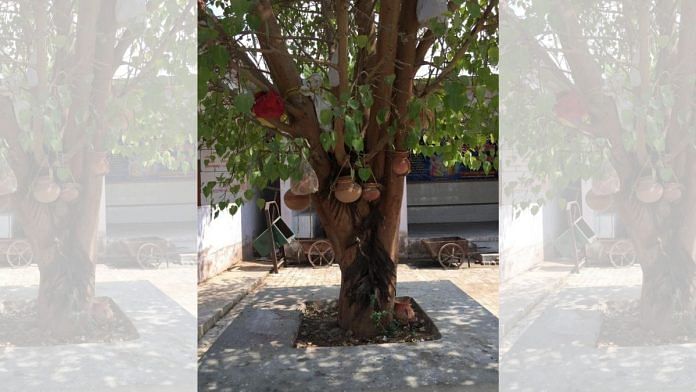Banda/Chitrakoot: Earthen pots, quite a few of them, hanging from branches of peepal trees near crematoria have become one of the most telling sights of the Covid pandemic in villages across Banda — one of the most backward districts of Bundelkhand — which has seen a surge in deaths since mid-April.
According to village elders, the hanging of earthen pots on peepal trees close to crematoria, by relatives of the dead, is an old custom in these areas. After a cremation, earthen pots are hung by family members in memory of the departed. Someone from the family visits the tree every evening to put some water in the pot and light a diya under it. This is practised for 12 days, till the final rituals are performed for the departed person.
“It is believed that the hanging of the earthen pot on the branches of a peepal tree till the last rites are completed on the 13th day, brings peace to the soul of the dead person. The earthen pot is taken down and broken after the last rites are completed,” explained Kalika Prasad, a 60-something resident of Atarra village, in Banda.
But while just one or two such pots could be seen earlier on any given day, in the past one month close to a dozen fresh pots can be found tied to the trees almost every second day, said residents of villages across Banda that ThePrint visited this week.
“I don’t remember seeing such a sight in Banda ever….Pichle ek mahine me jitni maute hui hain yehan, uska koi hisab nahin hain (There is no account of the total number of deaths that have taken place here in the past one month),” said Munna Tiwari, of Atarra village.
Tiwari conducts last rites of the dead at the Shri Gaurababa temple, near one of the village crematoria. Where earlier he would perform two to three such rituals in a month, now he is called to conduct up to five every alternate day, said the priest.
Though official figures continue to put the total number of Covid-19 cases at under 200 and deaths in single digits, the actual number of people dying in villages is much higher.
“There have been three-four deaths in our village in the past ten days. And all those who died had had [Covid] symptoms like fever and shortness of breath,” said Zahir Ali, a farmer in Bhujuan Purwa village.
The first Covid wave in the country last year had not been so brutal to Banda. There weren’t as many cases, said locals. The death count was also low.
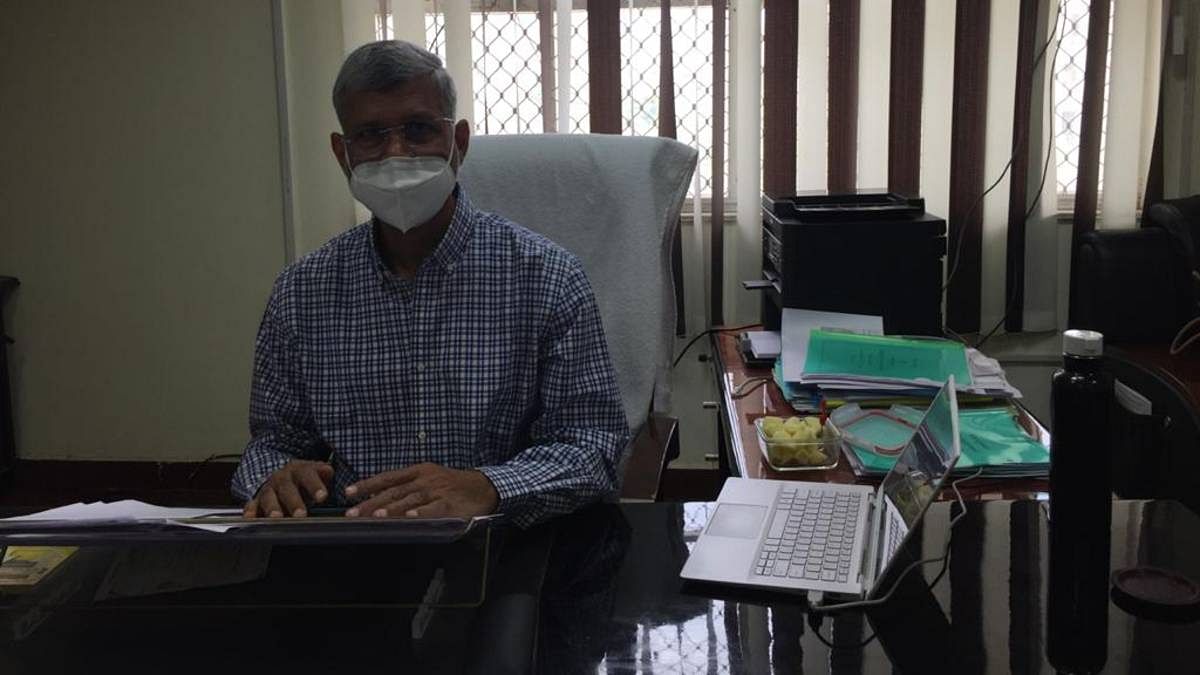
But mortality has been very high in the district during the ongoing second surge, said Dr Mukesh Yadav, principal, Government Allopathic Medical College, Banda. The hospital attached to the medical college has 400 beds.
“Last year, we did not have to use more than eight oxygen cylinders during the entire first wave. The cases were not that severe. This time, oxygen cylinders are disappearing as we get them. The demand continues to be very high. I have lost count of the number of cylinders we have used so far,” said Yadav.
What has the villagers especially scared is that many among the casualty have been young people, those aged between late-30s and mid-50s, and the condition of the patients is deteriorating so fast that often it has been only a few days between a person falling ill and passing away.
In the absence of tests, however, the cause of death can’t be confirmed as Covid. Many Covid patients are also testing negative initially, and only a CT scan is confirming the presence of the virus.
Meanwhile, prolonged fever following vaccination, and the death of a few of those who had received their first doses, even though not connected, have scared off many from going in for the Covid vaccination.
While the villagers blamed the vaccines for the sudden surge in cases here, doctors said the increase in Covid cases in the area was owing to panchayat polls in the state, and villagers not following Covid protocol such as wearing masks and maintaining social distancing.
What some villagers are doing now is trying to spread an awareness about Covid and suggest home remedies to boost immunity against the disease.
Also read: ‘Where are our netas?’ Anger in UP over missing politicians as state buckles under Covid
A sudden surge in deaths
Most of the deaths, said the villagers, were among those in their late 30s and mid-50s, and happened within five to seven days of the person falling ill. This has added to fear among the villagers.
The symptoms were similar to Covid — a bout of cold, followed by fever and shortness of breath, and in some cases, heart attack.
But doctors in the village community health centres (CHCs) told ThePrint that in the absence of any test, these have not been registered as Covid deaths.
“Compared to earlier, more deaths have been reported in villages in the past one month. But now things are coming under control,” said Dr Neeraj Patel, in-charge of the CHC in Baheri village.
However, in the absence of tests, it is difficult to say the deaths were caused by Covid. “In many instances we hear that the symptoms were similar to Covid-19,” Dr Patel agreed.
Raju Singh, 46, who used to work in the library at Atarra Degree College, collapsed while being put on the CT scan machine on 26 April and died. He had had fever for the past five-six days and when he complained of shortness of breath, his family decided to move him to the hospital.
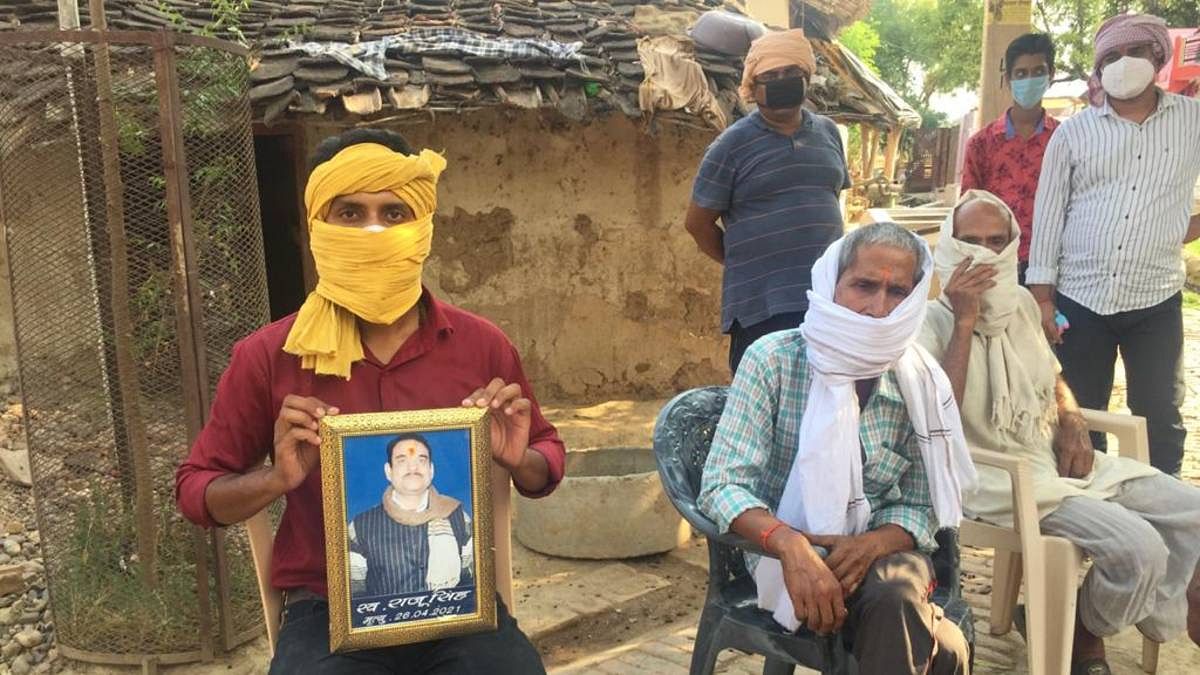
“We did not get him tested as he had just had mild fever. The local doctor in the village had given some medicines, which he was taking. It was only when his condition deteriorated that we decided to take him to the district hospital,” said Ram Narayan, Singh’s younger brother.
In the hospital, Ram Narayan said, the doctors asked them to get a CT scan done. “We rushed him to the CT scan room, but as we were putting him on the machine, he collapsed. We could not save him,” said a distraught Ram Narayan, adding that his brother had been very fit and never had any previous health problems.
The family is still in a state of shock, he said.
Many villages have seen multiple such deaths.
In a village, not very far from where Raju died, lives the family of 26-year-old Brijesh Garg, who works as a driver in a local school. There were two deaths in his family, within a span of 48 hours.
“First, my 74-year-old grandmother passed away on the morning of 27 April. She had had high fever since 24 April and chest congestion. We took her to a doctor who prescribed some medicines. But that didn’t bring her any relief,” said Garg.
Brijesh’s father Jagdish Prasad Garg, 55, a farmer, also fell ill by 25 April, and developed a high grade fever and diarrhoea.
On the morning of 27 April, Garg and his two brothers were preparing to take their grandmother to the district hospital, but she collapsed before the ambulance could arrive. The brothers had just returned home after cremating their grandmother when they noticed a deterioration in their father’s health.
“We rushed him to the district hospital. But he could not make it. Within a span of 48 hours, we lost both my grandmother and father,” said Garg.
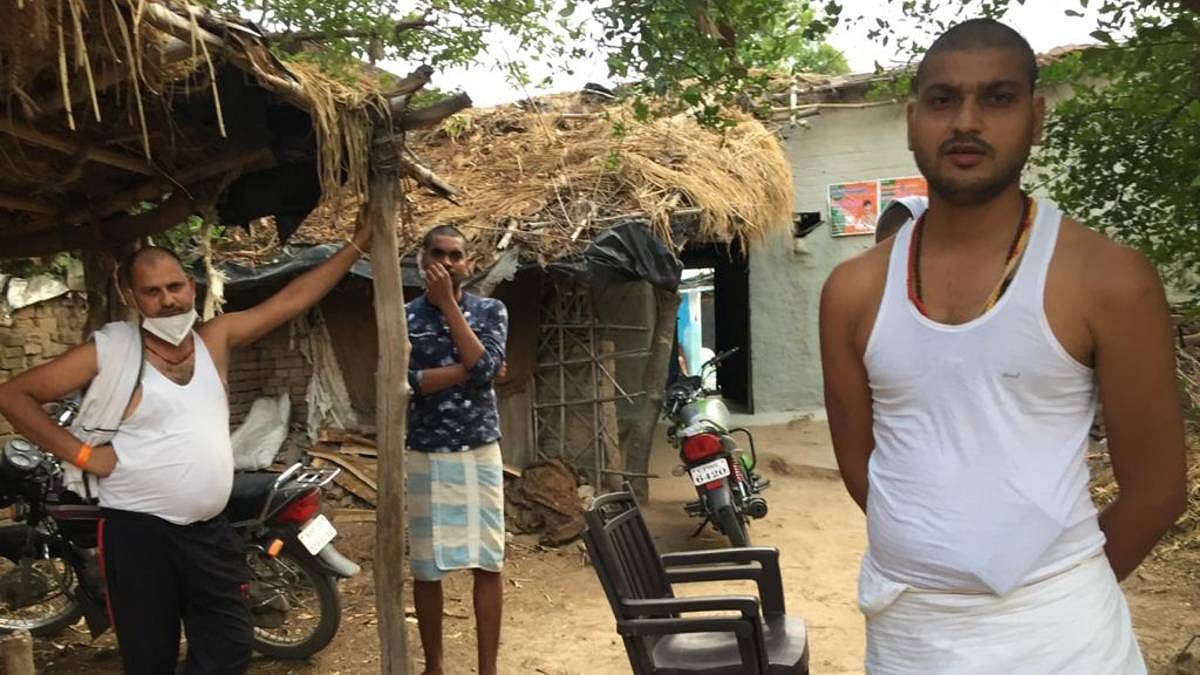
In Banda’s Mardan Naka area, there have been six deaths in the past fortnight, where victims had similar symptoms, such as fever and shortness of breath.
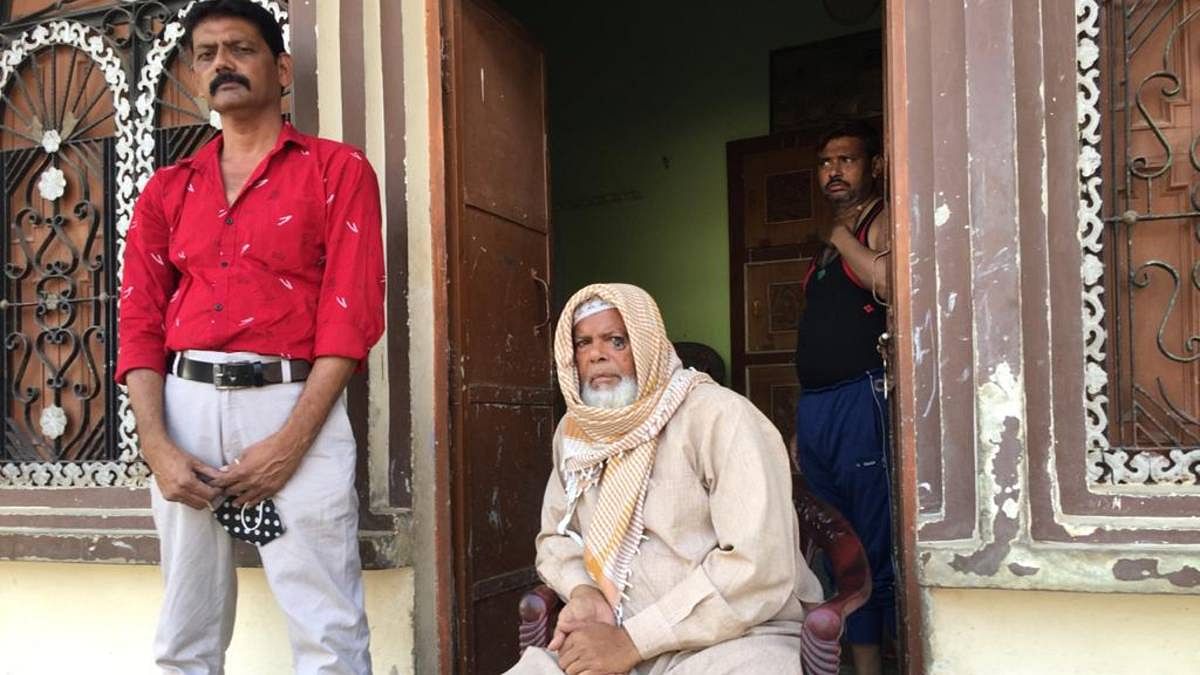
Mohammed Kasim, 42, was one of the victims. “He was perfectly fine. But suddenly on 26 April, he started having breathing difficulty. We took him to a private hospital but he did not get much relief,” recalled his 70-year-old father. “We were taking him to a good private hospital in Madhya Pradesh’s Datia, which had been recommended by a relative, but we had just travelled five kms, when Kasim passed away.”
In many cases, the delay in seeking medical help is adding to the casualty figures, said doctors.
Dr Mukesh Yadav of Banda Allopathic Medical College, told ThePrint: “First, villagers are deliberately not informing if somebody or the other in their family is showing Covid-like symptoms. There is a big stigma attached [to the disease]. By the time a patient comes to us, it is too late.”
What has also compounded the problem, said Dr Yadav, is the fact that in many cases both RT-PCR and rapid antigen tests to confirm Covid are giving negative results, despite the patient showing Covid-like symptoms. “We are seeing this in 20-30 per cent of the cases. It’s only when we get a CT scan done that it’s confirmed that the patient indeed has Covid. Lot of time is lost in all this,” he said.
Also read: The young in these 2 Varanasi villages started to die. That’s when Covid became ‘real’
Villagers blame vaccination
In most cases, those who had died had taken their first shot of the vaccine. Though the two are not linked, the surge in deaths has led to villagers in and around Banda, and near-by Chitrakoot district, to shun vaccination.
Since mid-April, the daily vaccination figures in the villages in Banda and Chitrakoot have shown a sudden dip.
“On an average, we have been vaccinating 30 people (per day) in the over 45 age bracket in the last fortnight. Unofficially, we were told to vaccinate around 120 people per day. But people are gripped by fear that the vaccines will kill them,” said Dr Shiv Sagar Singh, in-charge of the Atarra (urban) CHC.

It’s the same story in healthcare centres across the district.
Dr Patel of the Baheria CHC said on an average, only 10 people are coming for vaccinations daily at his centre now. “About a month back, we were vaccinating 80-90 people every day,” he said.
Every morning, a vehicle comes from Mahua block, where the cold chain is located, to the Baheria CHC, carrying vaccine doses in an ice box. “These days, we are returning the boxes to the cold storage in the evening. Otherwise, the vaccines will be wasted,” said Dr Patel said.
Till mid-April, said Dr Mukesh Pahari, the district immunisation officer of Chitrakoot, people were coming voluntarily, in large numbers, to get vaccinated. This is not the case any more.
“We have also observed that in most cases, the fever post vaccination now lasts for at least 15-20 days, instead of the usual three-four days. We have informed health ministry officials of this development,” said Dr Pahari.
The lingering fever, he said, has deterred people from coming for their shots.
“In January, we were vaccinating around 100-120 people every day. But then the numbers dropped drastically. Now, on an average we are vaccinating 30-40 people a day. We are sending out Accredited Social Health Activist (ASHA) to convince the villagers to get their vaccine shots, but it’s not having much effect,” said Dr Pahari.
Also read: Numbers are clear. Saving rural UP from Covid catastrophe must be a national mission
Villagers come together to help the affected
Meanwhile, with hardly any testing happening at villages — because of the lack of healthcare workers, despite the Uttar Pradesh government announcing door-to-door screening and testing — some villagers have now come forward to create awareness and distribute traditional remedies to cure cold and cough, like kadha (a herbal concoction to boost immunity) and basic medicines to boost body immunity, like vitamin C and zinc capsules.
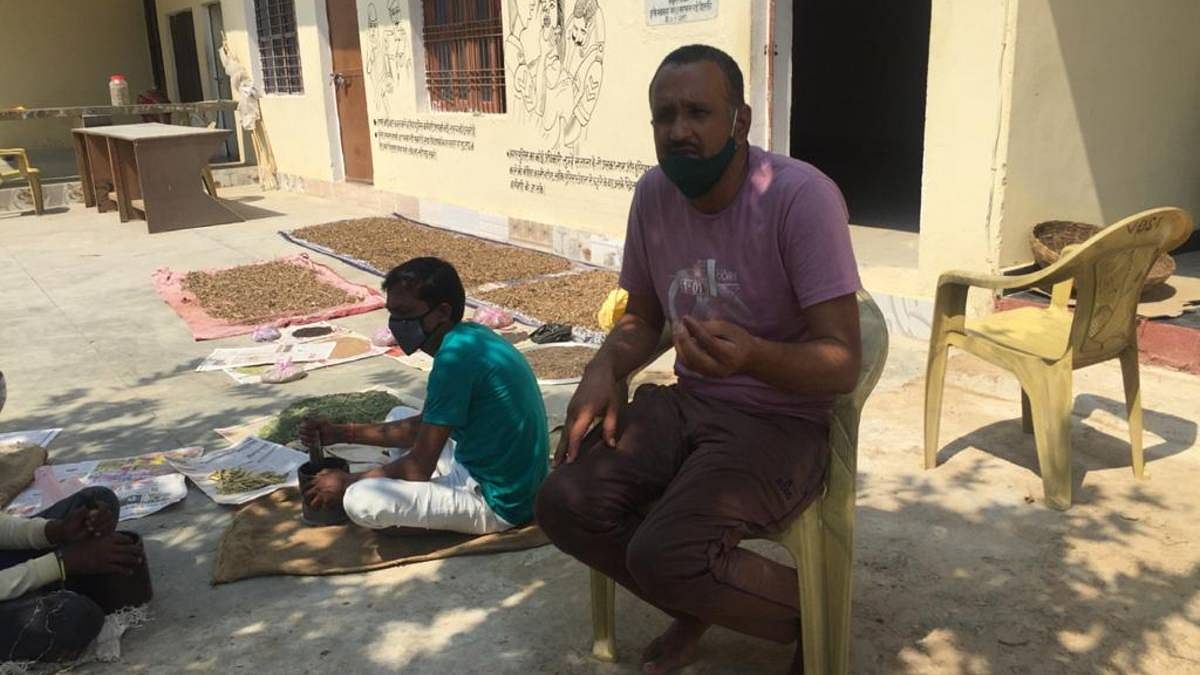
“We are distributing corona rakshak kits to around 1,000 families, who are infected or have corona like symptoms. Besides kadha, the kit has medicines like Vitamin C, zinc, a thermometer, soap and sanitizer,” Raja Bhaiyya, an Atarra-based social worker, who runs the voluntary organisation Vidya Dham Samiti, told ThePrint.
(Edited by Poulomi Banerjee)
Also read: Meerut is UP’s worst-hit Covid district, but villagers there still fear testing & hospitals



